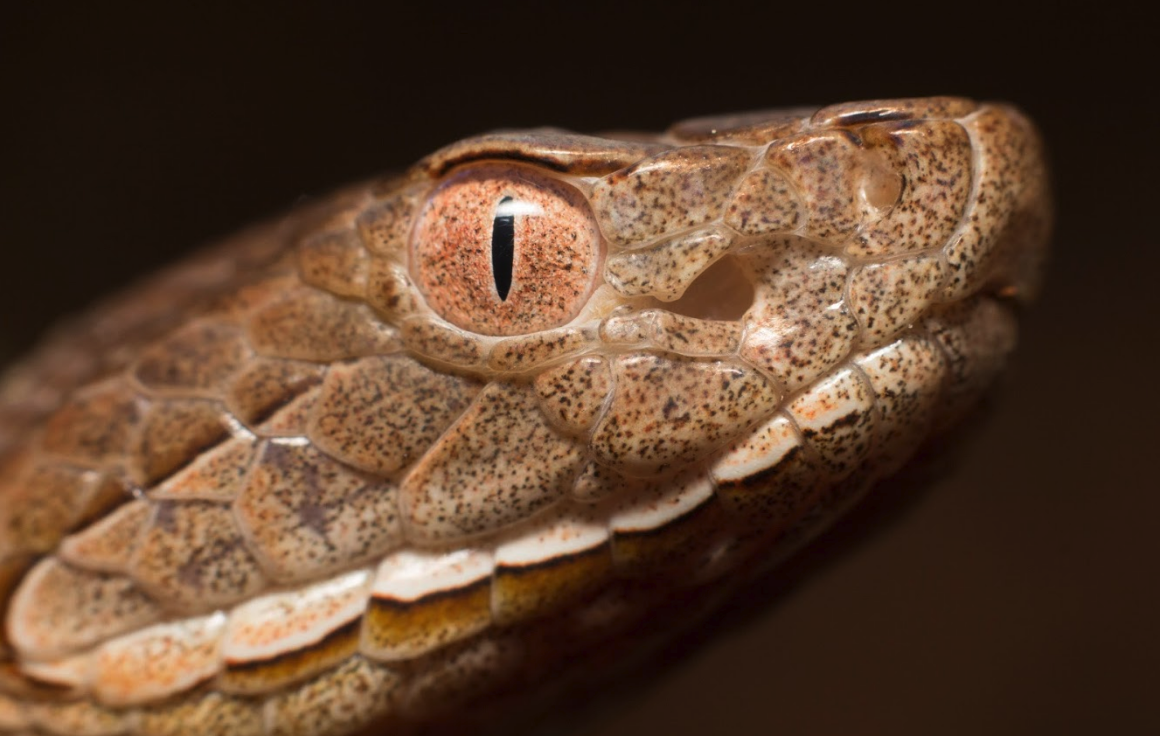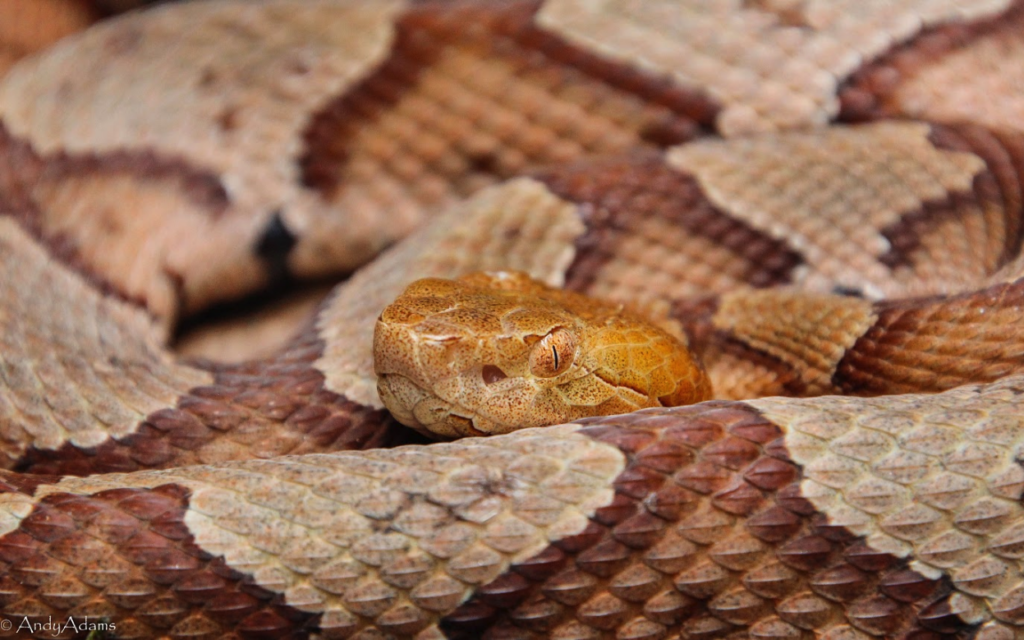
Venomous snakes have been misunderstood and feared by humans for hundreds of years. The historic and current mischaracterization and demonization of snakes has led to widespread persecution and killings of snakes across the globe. In contrast to these fears and common misconceptions, multiple studies over the last two decades have revealed that venomous viperid species are passive and even cowardly. For example, Gibbons and Dorcas (2002) tested the response of Cottonmouths, another very common venomous viperid species. Their study found that Cottonmouths were non-aggressive and were unlikely to bite in an encounter with a human. The Eastern Copperhead (Agkistrodon contortrix) is one of the most common and widespread venomous species in the US, and many people live in fear of them and kill individuals on sight. In this newly published study by the Susquehannock Wildlife Society research team, we designed the project to examine the behavior of Copperheads when approached by a human and determine how likely a Copperhead was to attempt to bite during an encounter. Our findings, consistent with other studies, provides evidence that further supports the argument that Copperheads and other viperid species are not aggressive and will not bite unless it is a last resort.
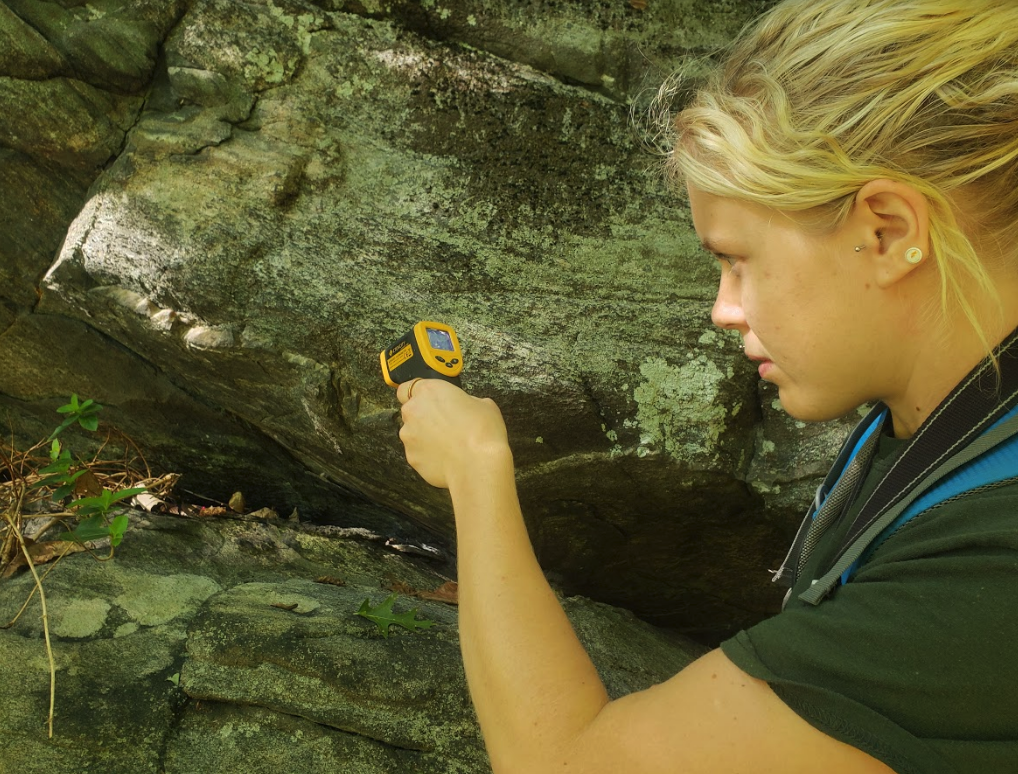
We started our study by developing a step-by-step process (also known as a hierarchical behavioral trial) to test the defensive behavior of Copperheads. We started by taking the external temperature of the snakes with a temperature gun. As ectothermic (cold-blooded) organisms, the snake’s behavior could potentially be influenced by its body temperature.
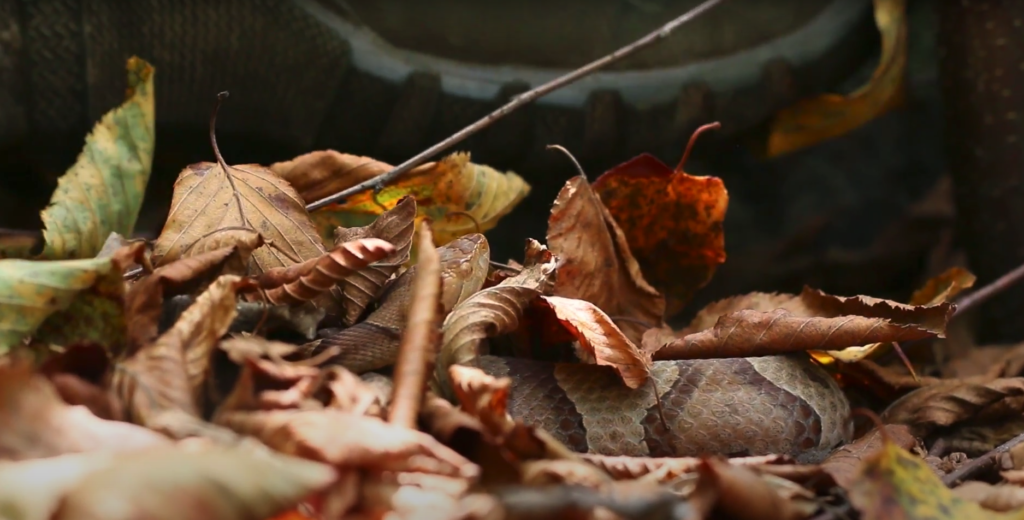
Then, we placed a boot apparatus next to the Copperhead to simulate a hiker stepping next to the snake.
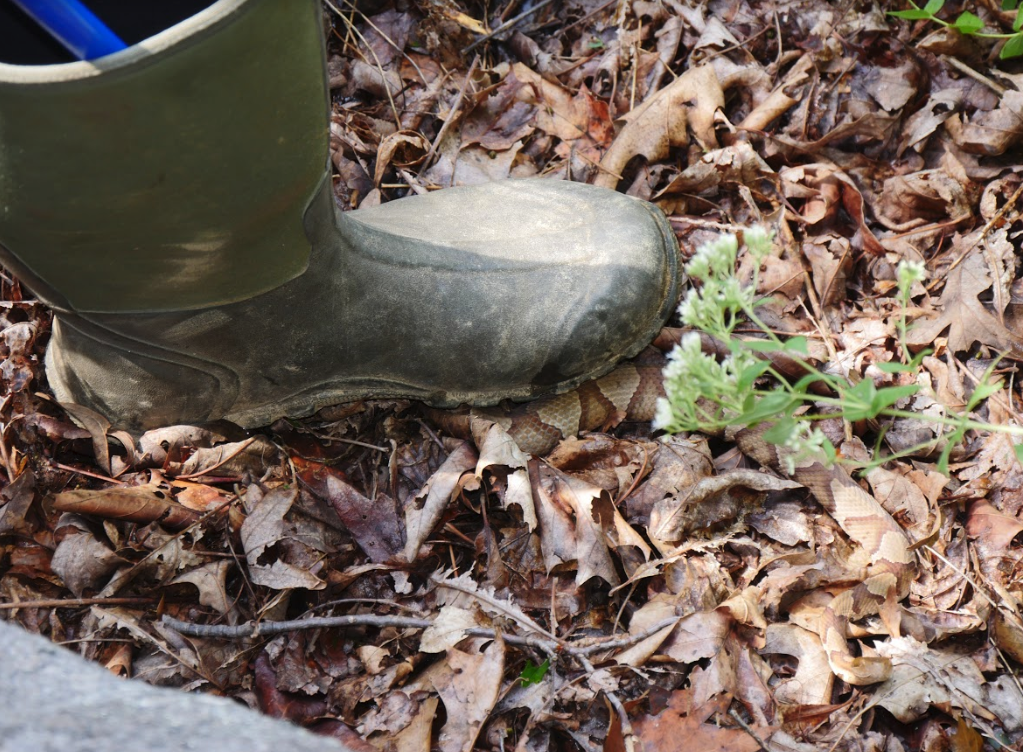
Next, we placed the boot apparatus gently atop the copperhead to simulate a hiker accidentally stepping on the snake.
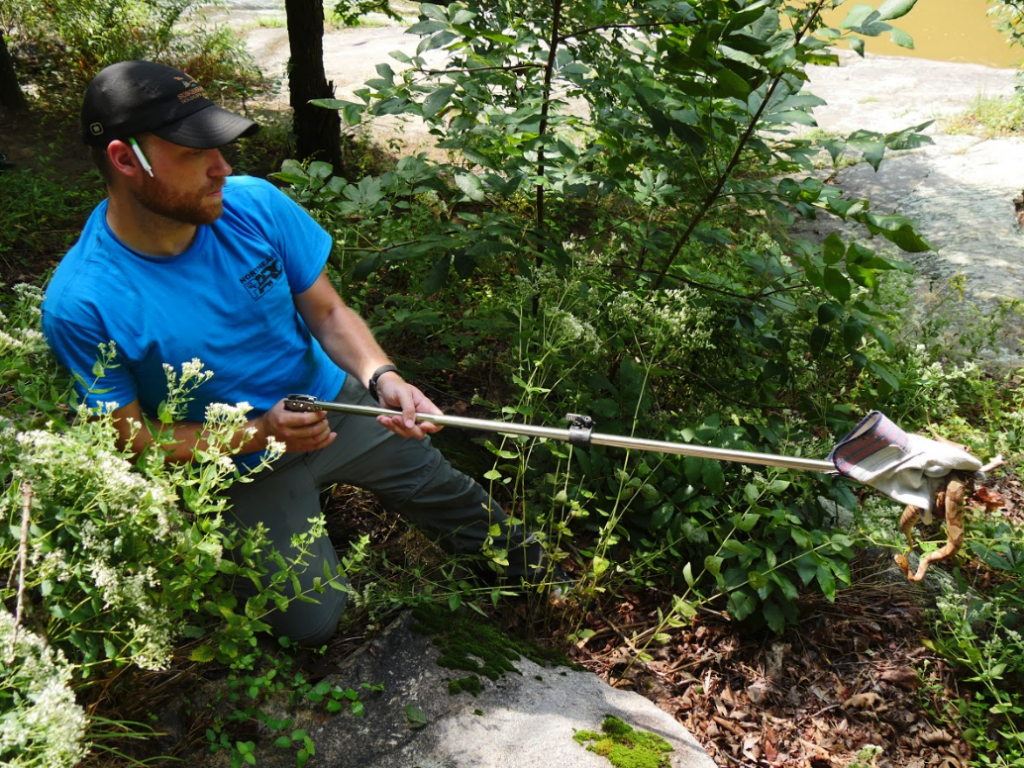
Then we used a pair of snake tongs equipped with a glove to simulate a person picking up the snake. We used a behavioral rating system to rank the defensive behavior elicited from the Copperhead after each step of the process. These were categorized as either “no response”, “fleeing”, “tail vibrating”, “feigning striking” and “biting”.
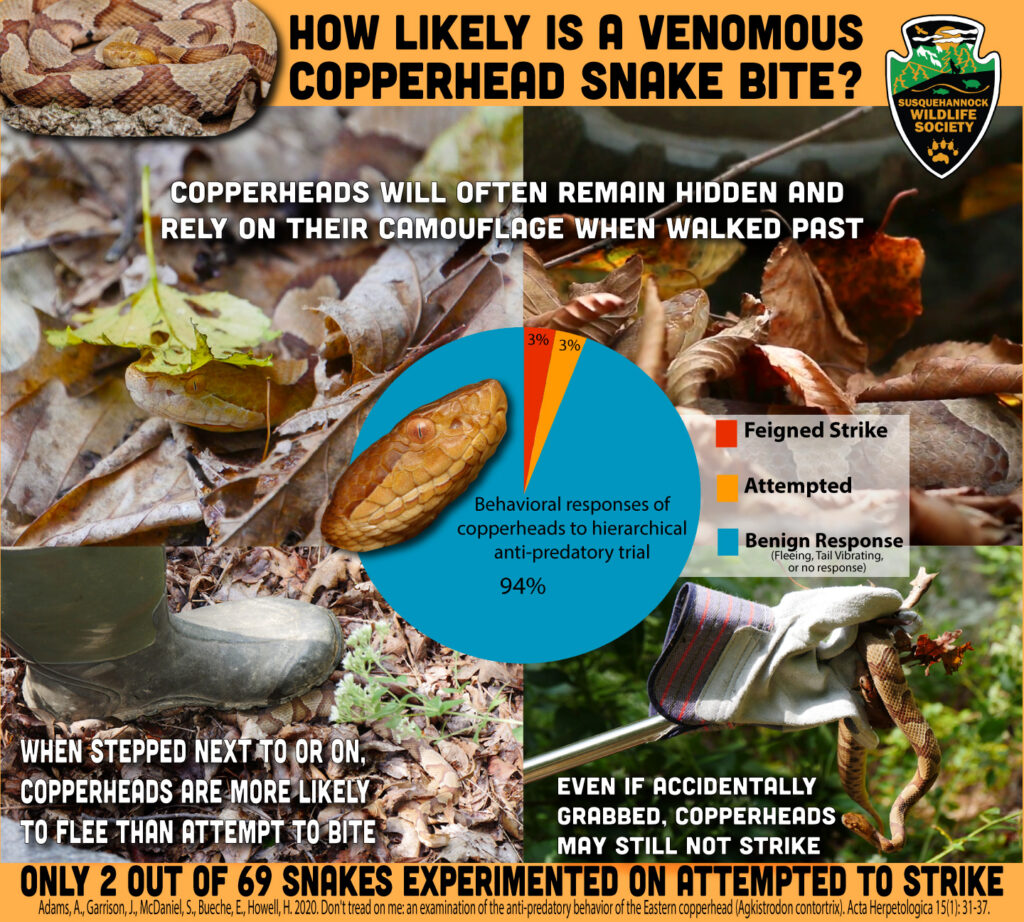
In total, we tested 69 Copperheads on our defensive behavior scale. Out of 69 snakes, 15 individuals fled the area before we could perform any other behavioral tests. During the initial approach, one snake vibrated their tail before fleeing, one snake performed tail vibrating and a feigned strike before fleeing, and one snake attempted a strike. After accounting for these 18 snakes that escaped, 51 snakes remained to be tested through the aforementioned trials. For a summary of the responses to each of the individual trials (stepped next to (N = 51), stepped on (N= 33), and picked up (N = 14)). In total across all trials, five snakes displayed tail-vibrating behavior and one exhibited a feigned strike followed by fleeing. Across all trials, we recorded only two instances of striking (3% of all tested snakes).
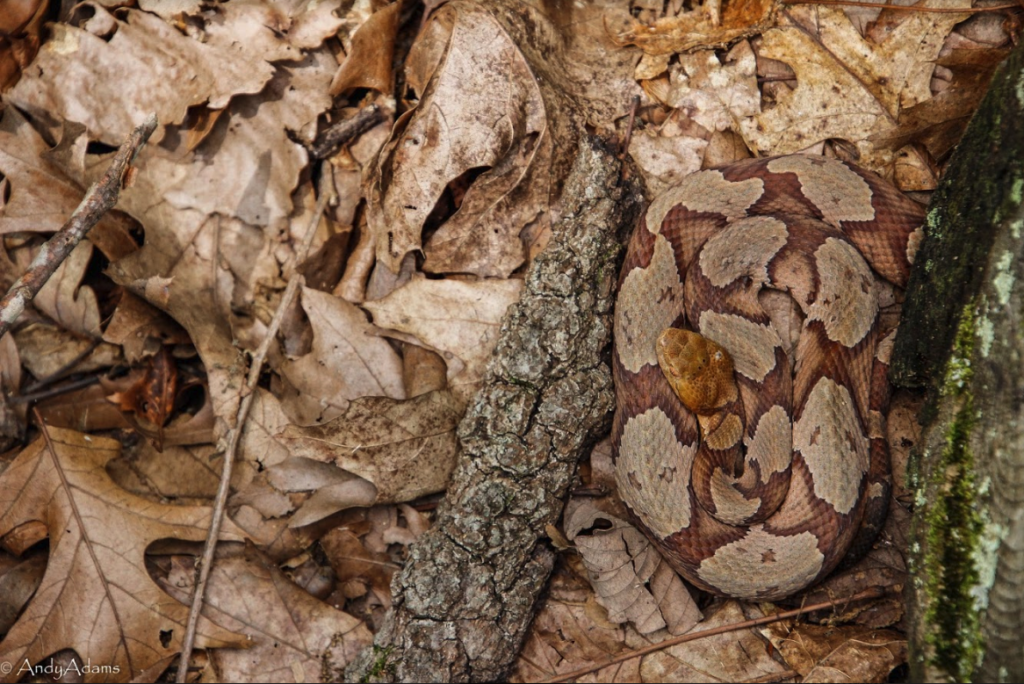
Our findings suggest that Copperheads are far more likely to rely on camouflage or flee in response to a potential encounter with a human than they are to attempt to bite. Copperheads play a valuable role in maintaining a healthy ecosystem across much of the Eastern US. We hope this study will be used to dispel common misconceptions surrounding the behavior of Copperheads and will be used as a tool to promote their welfare and conservation. Finally, while our study suggests that Copperheads are very unlikely to bite humans, purposeful handling of any venomous snake is very dangerous to both parties and should be avoided at all costs. Any wild animal will attempt to defend itself when in danger, and the Copperhead is no exception. If an accident occurs and you are bitten, call 911 and seek medical attention immediately. If you are able to photograph the snake from a safe distance it may help with your treatment. For more information on snake bites please visit the CDC page here https://www.cdc.gov/niosh/topics/snakes/default.html
Our paper, published in Acta Herpetologica, can be viewed here –
CLICK TO VIEW ACTA HERPETOLOGICA PUBLICATION THEN SCROLL DOWN FOR FULL TEXT
Adams, A., Garrison, J., McDaniel, S., Bueche, E., Howell, H. 2020. Don’t tread on me: an examination of the anti-predatory behavior of the Eastern copperhead (Agkistrodon contortrix). Acta Herpetologica 15(1): 31-37
Literature Cited
Gibbons, J. W., and M. E. Dorcas. 2002. Defensive Behavior of Cottonmouths (Agkistrodon piscivorus) toward Humans. Copeia 2002:195–198.
The Susquehannock Wildlife Society is a 501c3 non-profit dedicated to protecting local wildlife in the Lower Susquehanna region through research, education, conservation and rescue.

